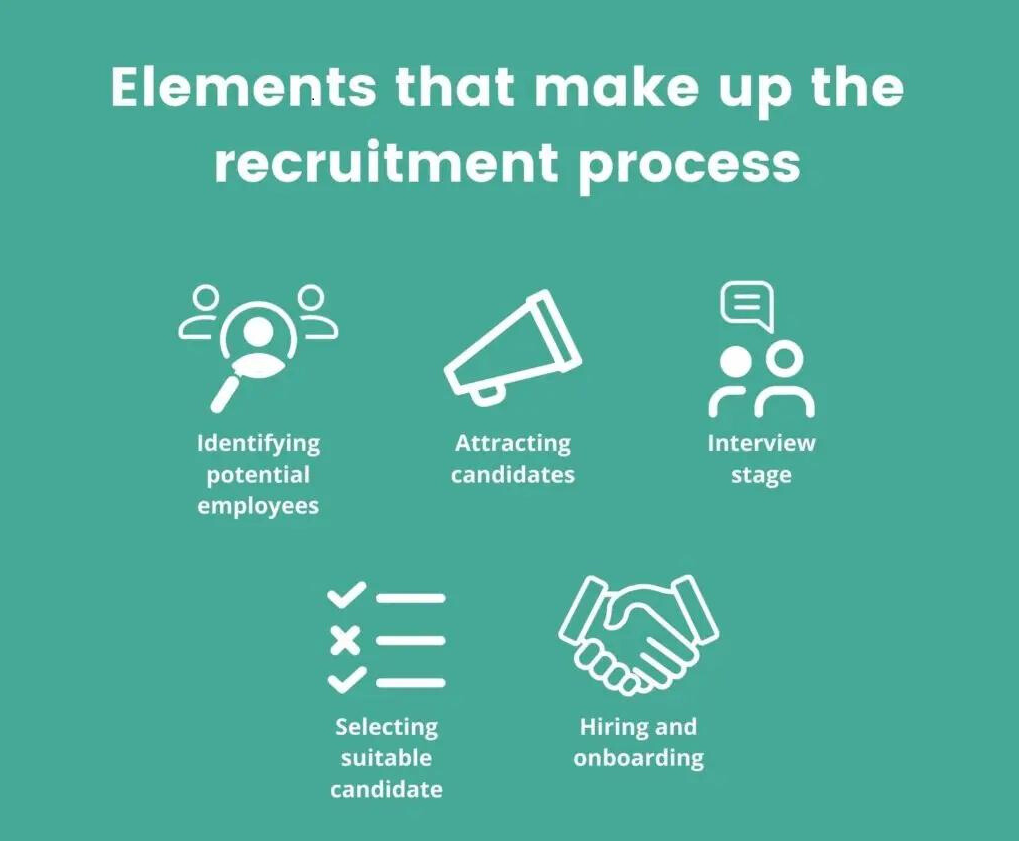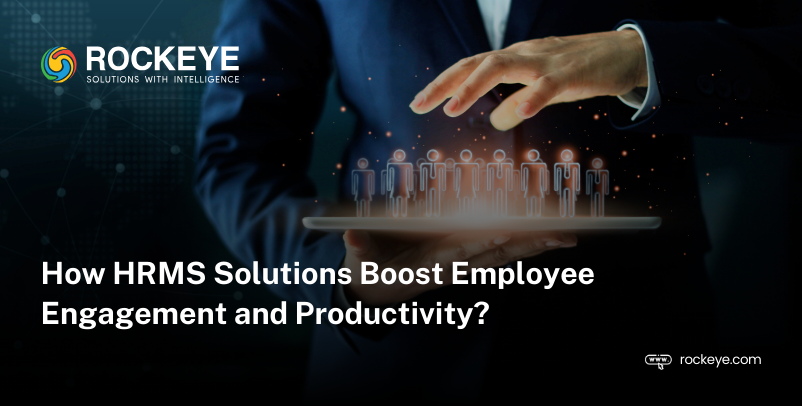Employee engagement is a major factor behind the long-term success of a company. Engaged employees are highly motivated, productive and are committed to their day-to-day work. This helps them to perform to their potential. They also have a high level of job satisfaction.
However, according to a State of the Global Workplace Report shared by Gallup in 2023, 85% of employees worldwide do not feel engaged at work. Disengaged employees can also have an impact on a company’s work culture. As per a study by Harvard Business Review, companies with low employee engagement scores have 18% lower productivity and 16% lower profitability in comparison to those with higher engagement levels.
Making good use of Human Resource Management System (HRMS) can help you to solve the problem. This blog highlights the HRMS impact on production and efficiency. As per studies by MarketsandMarkets, global market size of HRMS software is projected to grow to $30.5 billion by 2025, with a CGR of 10% during the forecast period of 2020-2025. Cloud-based HRMS solutions offer scalability. This scalability is ideal for businesses which have fluctuating workforce sizes.
Such software can help you simplify HR processes, engage employees, and ensure long-term business growth. The major advantages of using HR software are process optimization and automation.
16 Major HRMS Impact Benefits That Ensure Long Term Retention and Boost Employee Engagement

Source: TestGorilla
1. Streamline The Recruitment Process
2. Performance Management
Searching for an AI-powered document management tool to store, govern and share documents efficiently? Count on us.
3. Create Group Chat and Discussion Forums
4. Offering Real-Time Reviews and Feedback
5. Reimbursement Management
6. Creating An Inclusive Work Culture
7. Staff Self-Service
Looking for an HRMS software which enables real-time AI analysis to improve employee performance? Count on ROCKEYE.
8. Data-Driven Decision Making Process
9. Planning of Shifts
10. Payroll Management
11. Training and Development
12. Addressing and Overcoming Challenges
13. Recognition and Rewards Programs
14. Employee Feedback and Surveys
15. Transparent KPIs
16. Online Leave Management
8 Ways HRMS Improves The Efficiency of An Organization
1. Productivity Gets Boosted
HRMS impact software can be used to boost productivity in different ways. It can be used by HR teams to track as well as manage overtime hours of staff. The software calculates overtime using predefined rules and creates reports that help the HR team to process payrolls. So, the HR team can instantly generate attendance and absenteeism reports and late arrivals.
You can integrate HRMS within payroll systems, and streamline the attendance data transfer and ensure accurate payroll processing. The software shares automated alerts to managers and employees for different attendance based events such as late arrivals.
2. Streamlining Administrative Tasks
HR administrative tasks are time taking. HRMS integration helps to automate processes like payroll processing. Employees can use self-service portals for simplifying tasks like attendance and time tracking. After all tasks are streamlined, the HR team can channelize their efforts on strategic investments.
Relying on predictive analytics and data-driven insights, HR teams can predict workforce trends, find out areas of improvement, and make informed decisions while working on talent management strategies.
3. Simplified Work Processes and Time Savings
One notable benefit of HRMS is that it helps HR teams to streamline their work processes. After time-taking administrative tasks are automated, the need for manual work gets reduced considerably. So, the HR team will get more time to work on high priority tasks.
Companies can improve the accuracy and accessibility of their data by centralizing it on HRMS. Streamlined processes and minimized manual intervention helps to improve an organization’s work culture.
4. Better Communication and Collaboration
To improve productivity, a team needs to collaborate and communicate effectively. HR management tools help companies to utilize digital platforms for communication and collaboration internally.
These tools help to ensureinstant communication, proper tracking of tasks and effortless sharing of knowledge among employees. Using these tools, organizations can enhance teamwork and create a conducive work atmosphere.
5. Factual Reviews
Time tested ways of performance reviews rely on subjective impressions and memory, which are often inaccurate. Using real-time tracking, managers can do performance reviews utilizing objective data collected during the evaluation period.
Adopting a data-driven approach helps to ensure that all performance reviews are accurate and based on achievements, and create transparency and trust in the performance management practices of a company.
6. Ensuring Cost-Savings With Time Optimization
Automating the HR process helps organizations to reduce operational costs and maintain effectiveness at the same time. After all aspects of the HR process get streamlined through backend optimizations, companies can improve the efficiency of their HR operations. As per projections by PwC, cloud-based HRMS solutions can help companies reduce their HR technology costs up to 30%.
Automating repetitive tasks can help the HR department to save time and reduce the need for more resources. These cost-saving measures offer more flexibility, enabling HR managers to work strategic initiatives like employee engagement without going outside their budget.
7. Better Time Management
Efficient time management by the HR team by reducing administrative tasks helps them to focus on strategic initiatives. By reducing time on mundane tasks, the HR department can focus on areas like employee engagement, create new talent development programs and improve recruitment strategies.
Improvement time management enables the HR department to ensure organizational growth and success while efficiently managing day-to-day operations. It also helps to create a culture of innovation and adaptability within an organization, which is essential for excelling in a dynamic work environment.
8. Efficient Talent Management
Starting from recruiting and onboarding to performance management and succession planning, HRMS enhances the efficiency of talent management. Using its comprehensive features, companies can attract the best talent, nurture skills and retain them for longer periods, thus enhancing the competitiveness of the workforce.
Moreover, HRMS streamlines administrative tasks, enabling HR managers to focus on initiatives related to talent development and management. This helps to enhance employee satisfaction and boosts productivity of an organization.
Conclusion
Though the job market is highly unpredictable, adopting the use of HRMS software can help you detect issues early and resolve them. It is an effective tool for helping companies improve staff engagement and retention. Doing so can boost staff empowerment, streamline HR processes, and maximize financial results. The HRMS impact on staff engagement and productivity is phenomenal.
How Can ROCKEYE Help in Creating Customized HRMS Solutions?
At ROCKEYE, we have expertise in developing HRMS solutions which can help you to streamline all aspects of the HR operations process, be it recruitment or retirement. From ensuring efficient time tracking with employee timesheets to a centralized employee database, our HRMS solutions have it all.
Using our HRMS impact solutions, you can manage daily timesheet updates in one system. The employees of your organization can log in their work hours, track patterns and have a clear view of the way their time is being used. This will ensure efficient collaboration and communication.
Our HRMS impact solutions will also help you manage employee training and conduct surveys on behalf of your organization. The staff can participate in training or respond to surveys through the ESS portal.
FAQs
In this blog, we have explained the various ways through which HRMS optimizes employee engagement and productivity. If you have more queries, you can refer to the FAQs given below.
1. How Does HRMS Boost Employee Engagement?
HRMS offers various tools for effective communication, recognition and feedback to create a great work environment that drives employee engagement.
2. How Can HRMS Help With Performance Management?
HRMS usually includes features to set goals, track progress and to conduct performance reviews. All these factors play a major role in enhancing productivity.
3. Can HRMS Help With Employee Onboarding?
Yes. HRMS can automate the onboarding process, including paperwork, training modules and introductions to the policies and culture of a company, ensuring a smoother transition for new joinees.
4. How Does HRMS Improve Communication Within A Company?
HRMS includes features like company-wide announcements, discussion forums and messaging platforms, enabling clear communication among employees of all departments.
5. How Does HRMS Use Data To Support Employee Well-Being Proactively?
HRMS analyzes different indicators like workload, engagement levels, and patterns of absenteeism to predict when an employee may require a mental health day and suggest it to them, thereby promoting staff well-being and enhancing their productivity.
Are You Ready to Integrate Our HRMS Solutions?
Get in touch with the experts of ROCKEYE.
Request a Call
